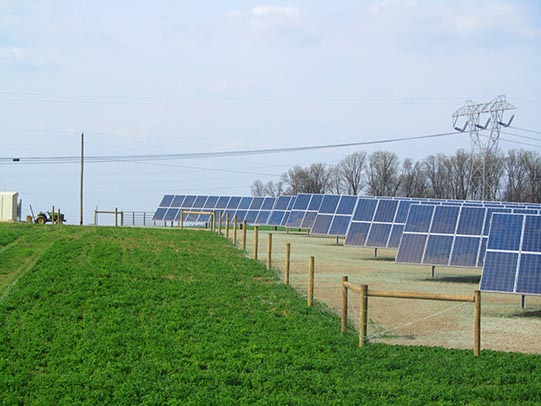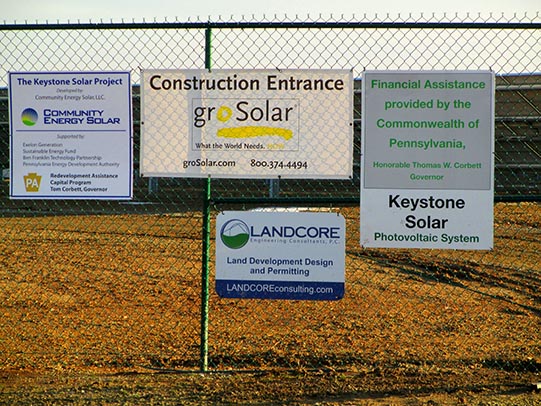
Solar Farms
Solar farms present an excellent opportunity for biodiversity enhancement, as they are often south facing grasslands which with suitable management can provide habitat for a wide variety of wildlife. In most solar farms panels are set on frames and there is minimal disturbance to the ground. The panels have no moving parts and the infrastructure typically covers only 30% of a site. Following construction there is little human activity apart from occasional maintenance visits. Most sites have a lifespan of at least 20 years which is sufficient time for land management to yield real wildlife benefits.
Ground Erosion -- A naturally occurring process in nature, soil and ground erosion are caused by water and wind. Expected as a gradual occurrence and planned for at a certain periodic rate, sudden erosion can have a deleterious effect on a PV plant. Loss of topsoil can lead to reshaping of the ground and the creation of channels, holes and slopes in earth. This could cause racking to shift affecting the ability of panels to generate the energy. It could also lead to flooding and destruction of equipment.
Grassland habitat can be established at the boundary of the site, under part or all of the solar arrays or some combination of both. It’s important to establish some form of grassland cover quite quickly after construction, as bare soil will be prone to colonization by weeds. There are a number of different grassland options to consider.
No Mow Lawn Seed Mix
Low maintenance No Mow Lawn seed mix is a specially designed blend of fescue grasses that grow to form a dense sod and thrive in full sun or partial shade. An established No Mow lawn requires little if any watering or fertilizing, and minimizes weed growth through its interlocking root system. No-Mow turf can be mowed once or twice a year, or not at all!
Site Preparation -- Prior to seeding “No Mow,’ all the existing vegetation must be completely eliminated. If renovating or converting an existing lawn, the grasses and weeds on the site must be killed or removed before planting.
Seeding Dates -- The optimal window for seeding “No Mow” is between August and September. Cool season grasses germinate well during the cooler weather of late summer and early fall, while most weeds germinate in spring and early summer. By the following spring the fescue grasses are in control, and leave little room for the germination of weed seeds in the soil. Cool season lawns that are seeded in fall experiences markedly less weed competition than spring seedings, mature faster, and should form a sod by the end of the following spring.
Seeding Methods -- “No Mow” can be seeded by various equipment, including: • Hand seeding (for small areas only) • Push-type grass and fertilizer spreader • Over the shoulder hand-cranked whirlybird type seeder • Turf slit-seeder • Tractor mounted broadcast seeder, such as a “Brillion” seeder • Tractor mounted slit seeder • Hydro-seeder
Fertilization is generally not needed to support growth of a healthy “No Mow” turf, except in extreme cases where soil nutrition is notably lacking.
Once the “No Mow” lawn is established, there are four basic mowing options: • No mowing at all • One late spring mowing, usually in early June when the seedheads appear • Fall mowing with a mulching mower, especially in wooded areas to chop up fallen leaves • Regular mowing, usually monthly, to maintain a more “cropped” appearance





